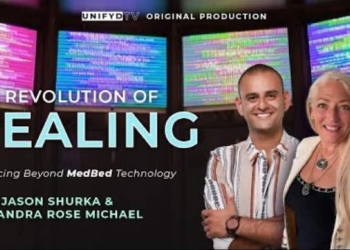
Several conditions cause us to feel and experience pain. In some cases, the treatment for these conditions can also cause pain. So what can we do in these cases, or when traditional medicine just doesn’t cut it?
In recent years more and more people have decided that the traditional route is not for them and are turning to unconventional and alternative treatments. In some cases, these therapies are not intended to treat the underlying problem but can be helpful in managing symptoms.
Conditions that cause ongoing pain can have a significant impact on overall health and quality of life. Effective pain management can drastically change things for the better. Some people are now turning to products such as topical CBD cream, but this should only be used for muscle pain caused by exercise.
Alternative therapies are now so common in the United States that nearly 10% of American adults now report practicing yoga regularly. This number has almost doubled in the last 15 years. However, that doesn’t mean that yoga, or other alternative therapies, will work for everyone – just as not all traditional medicines are suitable for all needs. You will need to ask your doctor, and may even need to try a range of different therapies and regimens before you settle on what’s right for you. You may also want to try blending your traditional medicine regimen with complementary therapies.
Common alternative therapies
Acupuncture
Acupuncture is an ancient Chinese therapy that uses very fine needles – no thicker than an individual strand of hair – to apply pressure to various points on the body. The process itself doesn’t hurt because the needles are so tiny, but the pressure created by the insertion of the needles (which can be left in for as long as 45 mins) is thought to relieve pain.
Massage
Massage is phenomenally popular as a way to relieve pain, stress, and other ailments such as anxiety and depression. Because there are so many options and techniques out there, it’s easy to find one that works for your precise needs.
No matter what form of massage you decide on, a good masseuse will not only relax you but really focus in on the areas and muscle groups that are causing the problem, relieving inflammation and pain.
Reiki
Reiki is based on the idea of ‘energy’ healing. Practitioners of reiki believe that an energy, or life force, constantly flows throughout the body. Getting sick or feeling stressed or anxious means that your ‘life force’ is low or out of balance.
During a reiki session, your practitioner will place their hands either on or just above your body and transfer energy from their hands to your body. This is thought to aid in relaxation, speed up healing, improve overall well-being, and offer relief from pain.
Hypnosis
Hypnosis, or hypnotherapy, is well-known as an entertainment act where people are put ‘to sleep’ and encouraged to do things they never would before – bark like a dog perhaps, or pretend they’re a chicken. But hypnosis can also be therapeutic, inducing a state of deep relaxation and allowing the hypnotized person to access their subconscious mind.
Accessing the subconscious can be valuable in helping with mental health problems and changing unhealthy behaviors. It is often used to treat phobias, anxiety, stress, and addiction. However, there are some conditions where hypnosis can make symptoms worse, so consult a medical professional before going ‘under’.
Bowen Technique
The Bowen Technique, named after its creator Thomas Ambrose Bowen, is an alternative physical manipulation technique that involves the practitioner making a series of light, rolling touches with regular pauses. It is believed that this combination allows the body to ‘reset’ itself.
As Bowen did not write down the specifics of the technique before his death, the technique differs depending on where you go. Currently, the most widely-practiced version was created by osteopath Oswald Rentsch, who studied under Bowen.
Homeopathy
Homeopathy is based on a similar idea to vaccinations. When we are vaccinated against a disease, we are given a mild version of the disease to help us build immunity against it without getting sick. Homeopaths treat conditions with small amounts, usually heavily diluted, of substances that might otherwise be harmful. These substances are thought to encourage our body’s natural healing ability to kick in: again, without having any harmful effects.
A properly trained homeopath will ask a ton of questions about your medical history before proceeding. If you are unsure, say no and move on to someone else.
Meditation
The idea of ‘mind over matter’ is not new, but its application as an alternative therapy for pain and other symptoms is significantly more recent. Tens of millions of Americans now use meditation to cope with the stresses and strains of everyday life. It works by emptying the mind of all thoughts and ideas and focuses entirely on listening to the body and the breath. This grounds us and helps us to listen to what our bodies are trying to say.
Reflexology
Reflexology is a popular alternative therapy often used to ease symptoms of anxiety, diabetes, asthma, and cancer. Reflexologists apply pressure to specific areas of the body – usually the hands, feet, and ears. These pressure points are believed to have a positive impact on corresponding organs, improving the health of the organ and the person overall.
If you want to try out reflexology, be sure to ask a registered professional. If done incorrectly, it can be very painful. You could also train to do reflexology on yourself if you prefer, but again, make sure you have the right knowledge and skills to do so.
Yoga
As mentioned at the beginning of this article, yoga has seen a huge increase in popularity in recent years. This is likely because not only is it a fantastic alternative therapy for people who are in pain, it also calms the mind, reduces stress, and improves overall strength and muscle tone.
Make sure to consult your doctor before starting any yoga regimen.















